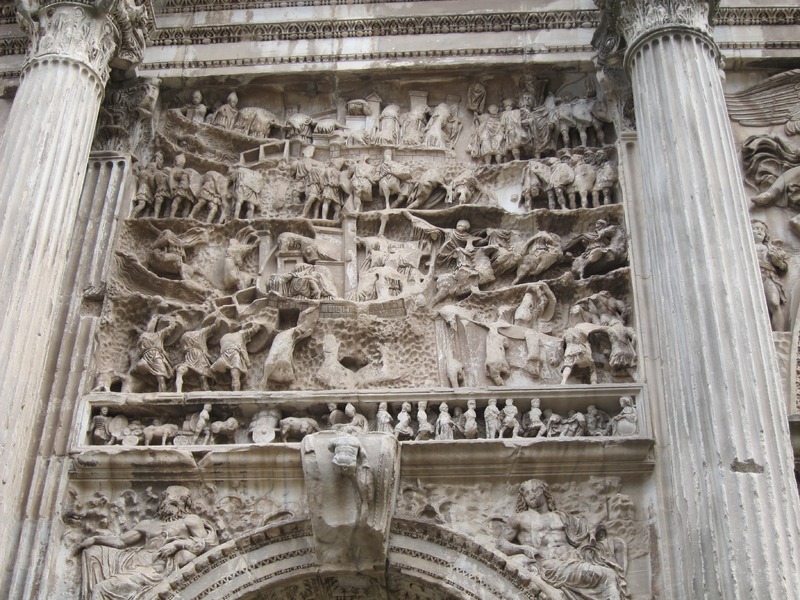Sculptures: Battles
Septimius Severus reigned during a time of significant transition in the Roman Empire. During this pivotal period, the Arch of Septimius Severus acted as a medium to promote the successes and legitimacy of the emperor. The battle panels that dominate the east and west facades were key in conveying this message.
Unlike the columns of Trajan and Marcus Aurelius, which popularized long and continuous representations of campaigns, the arch of Septimius Severus presents episodic views of Septimius’ capture of cities during the Parthian War1. The four panels depict masses of Roman soldiers, either marching together or breaching the walls of Parthian cities. These scenes represent both the uniformity and power of the Roman army, as well as Septimius’ ability to lead this army to victory.
